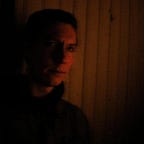These photos show how the American Civil Rights Movement influenced Aboriginal rights activists
Students traveled Australia by bus, just like the Freedom Riders
A mob surrounded them, shouting and jeering. They hurled insults, then spit, food, and rocks. Punches were thrown. The mayor ordered the protesters removed and police escorted them back to their bus, then out of town. It was an ugly and terrifying confrontation, but also a terrific success. They had finally made the news.
For two weeks in February of 1965, a crowded bus from Student Action For Aborigines (SAFA) toured small towns throughout New South Wales surveying both Aboriginal and white populations on their living conditions. They protested segregation in front of city offices and picketed movie theaters. In Moree, where the police escorted them out of town, they drew an angry crowd by trying to buy Aboriginal kids tickets to the public swimming pool.
The bus system in Australia wasn’t segregated, but SAFA were inspired by the American freedom rides. Picketing a cafe that refused to serve Aboriginal people in the middle of nowhere or publishing a report on the terrible living standards of indigenous groups wouldn’t force public conversation on the rural divide between white and brown Australia, unless the whole of the country was forced to see the ugly reality of segregation. Packing a bus to speak out on Aboriginal rights to hostile audiences would be an easily packaged media event. SAFA issued press releases and contacted reporters. They held a fundraising concert and recruited volunteers. One member was a radio producer for the Australian Broadcasting Corporation, another brought his Super 8 camera. Charles Perkins — one of two Aboriginal students enrolled at the University of Sydney — put himself front and center at direct actions.
Their first stops drew little attention. Then, on February 15, their protest of a veterans’ hall provoked a violent reaction. A Sydney Morning Herald photojournalist was in Walgett when townsfolk yelled, spit, tore signs, and that night, when a man rammed their bus off the road with his truck. On a second visit to Moree, a half dozen print reporters covered SAFA’s attempt to desegregate the swimming pool and the near-riot that ensued. And television finally picked up the story.
The actions of SAFA might have flashed across television screens and then disappeared, but they contributed to a growing movement advocating for Aboriginal rights. In 1967, the Australian constitution was amended to grant protection by the federal government and to include Aboriginals in the official census.
